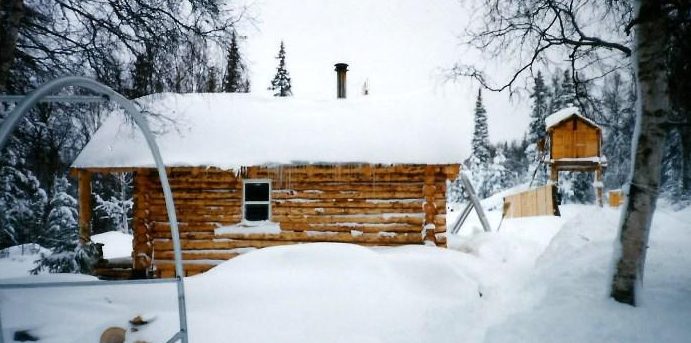Hi Mr. Rawles,
I just ran across your site and have been browsing it. Your Precepts of Survivalist Philosophy are superb. Best is that you are a 100% sold out Christian.
You may find a few observations of interest, from one who has lived extensively off the grid. First, some background. I grew up in a tiny community with the surf out my front door and a thousand-year-old forest that stretched for miles in back. My father grew up on a homestead and trapline among the Sarcees of the Alberta Rocky Mountain foothills. He never had a pair of shoes on until twelve, only Sarcee moccasins. My mother was raised in a sod-house and half dugout on the New Mexico plains, when Pancho Villa was raiding nearby. With such parents to form my youth, when in 1963 my employer left me with no food for ten days on my first job in Alaska as a 20-year-old, not only did I not starve but I couldn’t even get hungry. It took me no more than a half hour to an hour daily to secure all the food I could eat. Since, I once lived in a tent year-round for two years, lived four years in an 8 X 12 shack, and have put in a winter in a tent far north, where the temperatures commonly hit 40-50 degrees below. I have also dwelt extensively in a log cabin 100 air miles off the highway without electricity or running water.
Observation 1: When I think about really prepping, I think about not just setting up for the long haul but the permanent long haul. If the survival situation never gets better, you’re set. If it does get better, you can always move back to more modern life. All of the reliance on mechanisms that run on fossil fuels and use of technologies, like welding and so forth, are fine, as long as supplies last. However, if the collapse goes on long enough, survivalists will have to live with technologies of an earlier age. So here’s my take: I am not saying immediately abandon all newer technology before you are forced to, but put most of your preparation effort into reverting back into 1870’s to rural 1920’s technology. You do not want to be forced into Stone Age technology by lack of tools. I have lived a lot without electricity and running water in the ways of the turn of the 1900’s bush. It is totally comfortable and easy to slide back and forth, losing 150 years or gaining them back.
Observation 2: When you put a premium on living places, like down in America, where there is lots of sunlight to run solar generators and nice, deep, rich soil with plenty of clean water, you are looking to set up in digs that will be super attractive to the inevitable raiders. Places down there that seem rather rural and thinly populated will get populated (overrun) when the millions upon millions of city dwellers scatter out of Dodge. Hunger, and their kids going hungry, will change many into savagery, and some will be have Swat team-quality training in law enforcement and Special Forces-level military training that allows them a huge advantage in assaults on the amateur fortifications of most preppers, no matter how well laid. I don’t want to be anywhere hordes of that ilk are likely to be attracted to or have the bush and sea travel skills to reach. I don’t want them to be able to drive or even bicycle or ride a horse to my family.
My area, instead of banking on rich farm land, allows me to tap the richness of the sea. Not only from the depths but from the inter-tidal zone, where “when the tide’s out, the table’s set.” Summer or winter, it doesn’t matter. And when fuel is spent, no raider types are likely to want to row, paddle, or sail across perilous waters as far as my chosen area is from the nearest population centers, which the nearest three at 50-75 miles distance number but 50-200 souls. By the way, I won’t be totally dependent upon seaweed and forest edibles. A greenhouse will supply vegetables.
The native tribes that inhabited the area had the easiest life/highest standard of living of any in North America. It took them so little to take a living from their surroundings that they had leisure time to develop their religion, art, housing, trade, and warfare to a high standard. In their great cedar war canoes of 40-60 feet, they raided for slaves as far north as Cook Inlet and south to the Columbia. Their weaving technique is one of the world’s most complex and beautiful. This is all because the living was—and is—easy there.
Keep up your outstanding ministry,
In Him, – Rod










